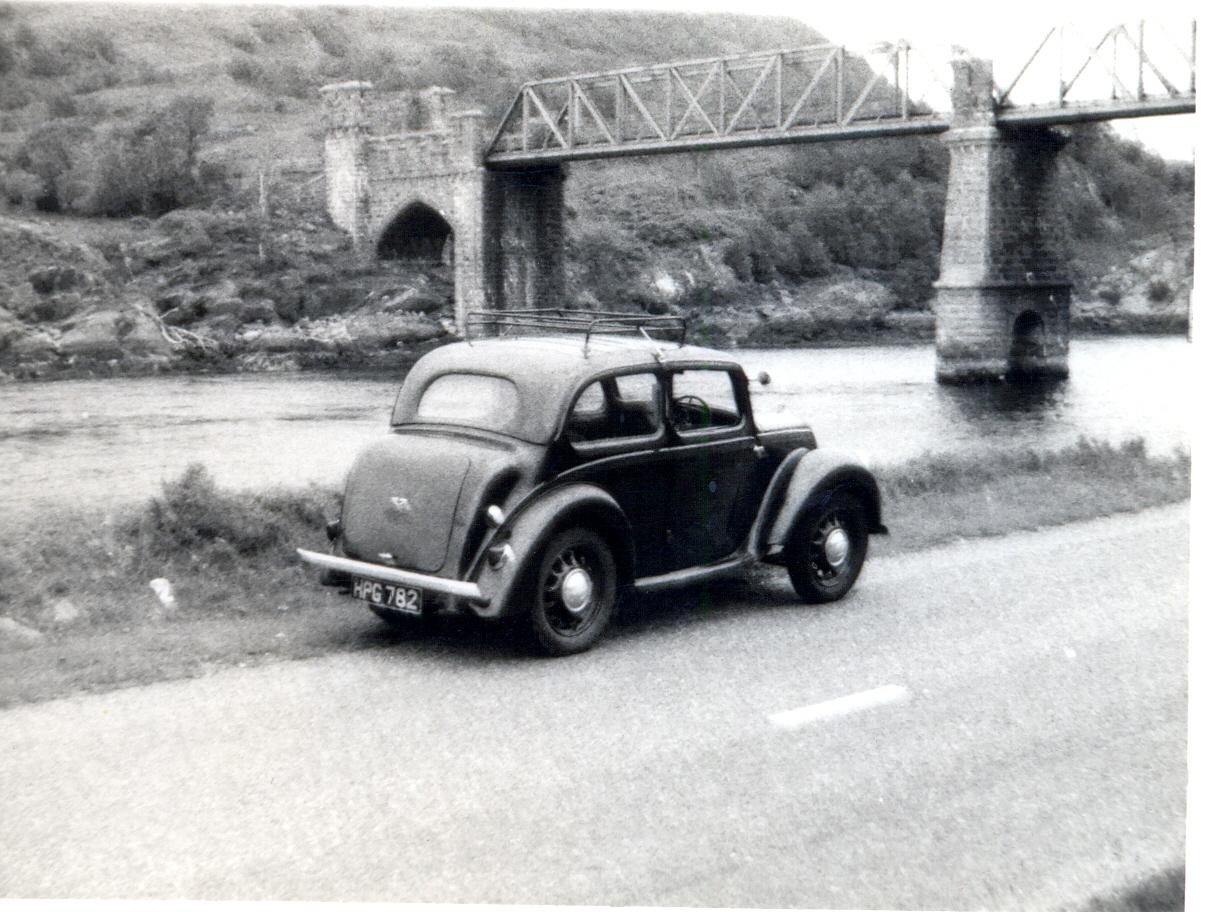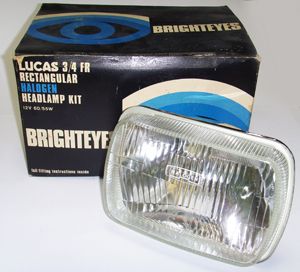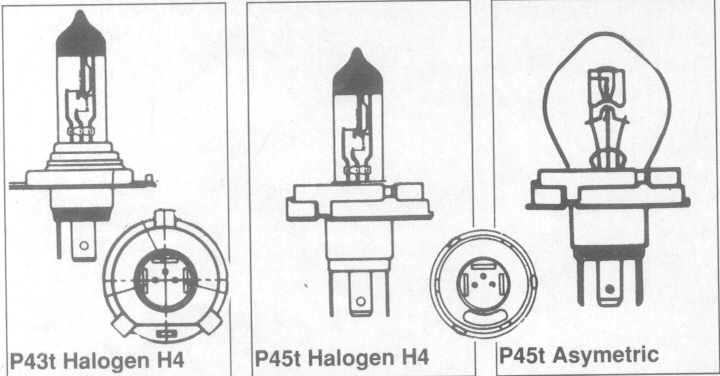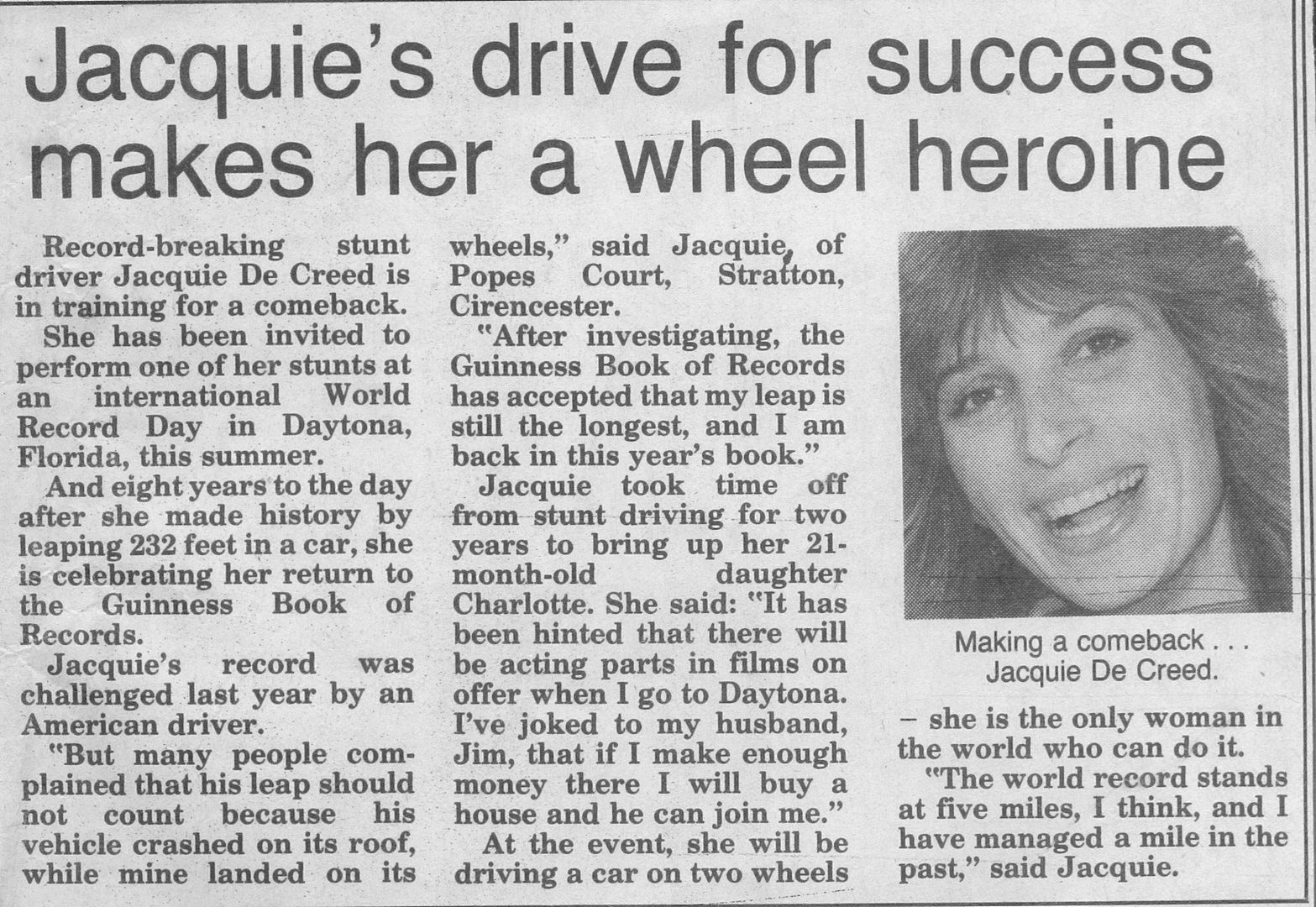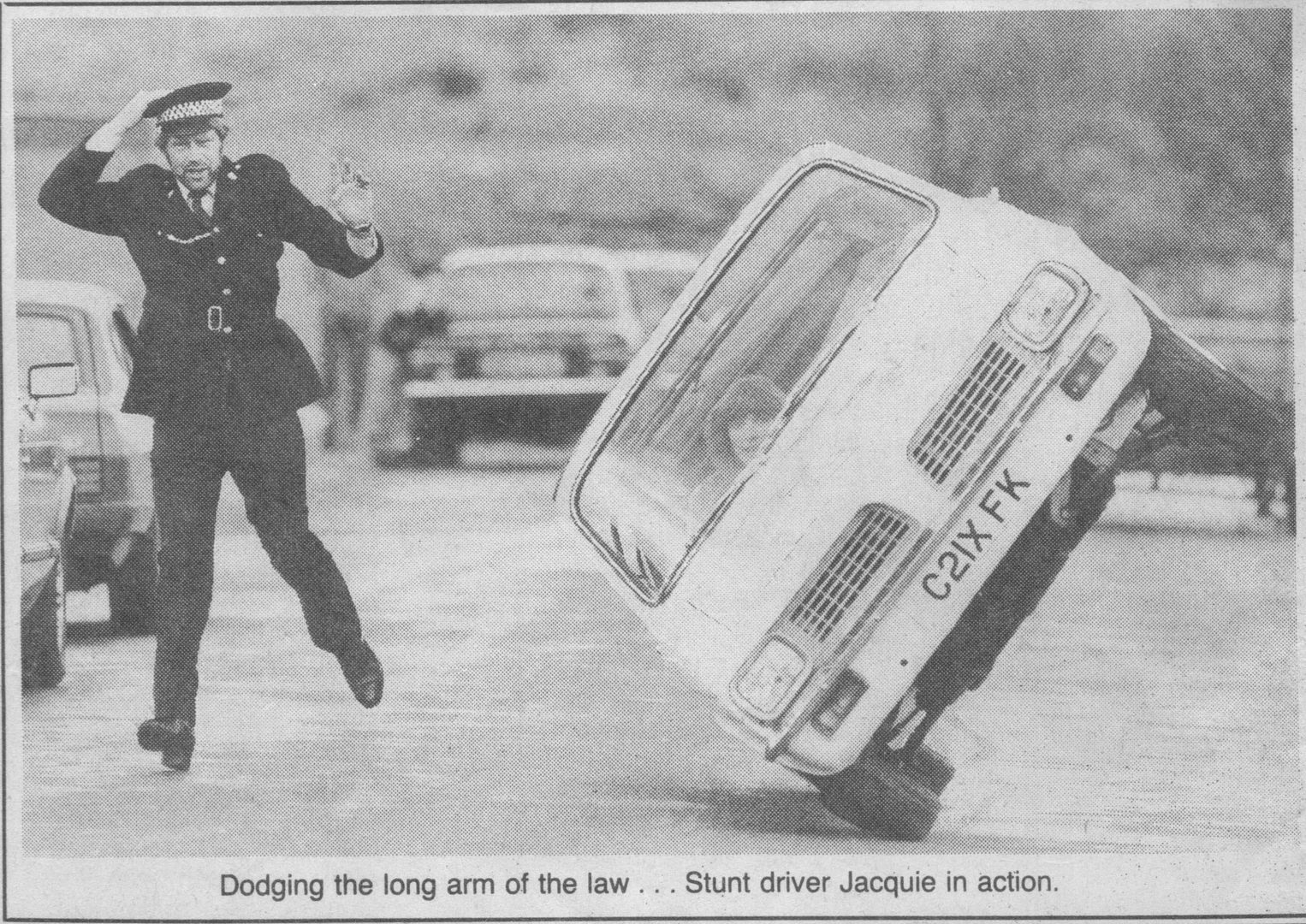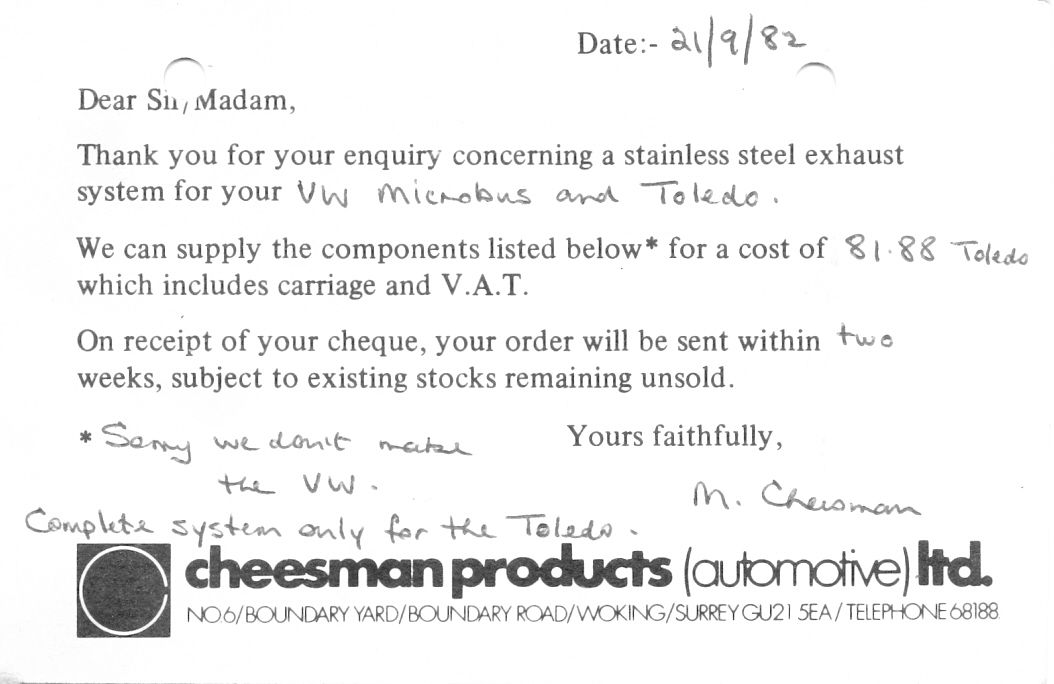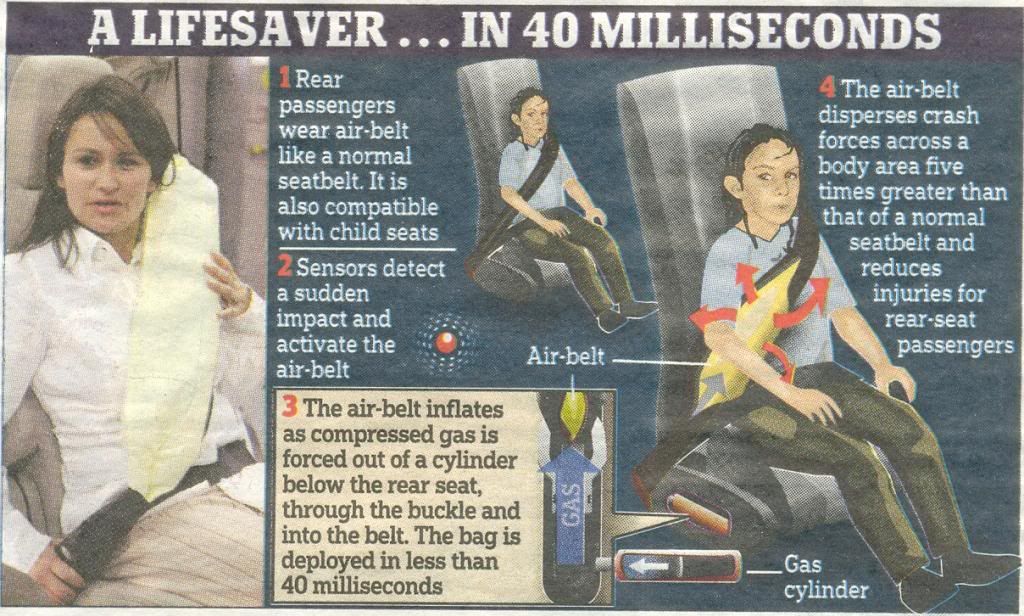Introduction
During the first-half of 1975, my father, my mother and myself, investigated various car models as a possible second family car, in addition to my father’s then GP practice runabout (a Fiat 124 Special T Automatic), which would be better suited for family outings and could otherwise be driven by myself (having passed my driving test the previous summer, in early-July 1974) and my mother who was then learning to drive, but never managed to pass the driving test, despite several repeated attempts.
Lastly, in late-April 1975, we examined the 4-door, Triumph Toledo 1300 models, which were displayed at Mann Egerton & Co. Ltd (139 Broadway, Leigh-on-Sea, Essex, SS9 1PL), who were then the local BLMC Rover & Triumph dealership. At that time, the list price of new Toledos, had recently been increased from circa £1500 to circa £1800 and I wasn’t greatly enamoured with the bodywork colours (especially the brown), of the new cars on display.
However, I had noticed another Toledo on the forecourt, which appeared to be of similar appearance to a Dolomite Sprint, with the following features:
• Mimosa yellow bodywork (Yellow 01 of Shade Colour 64) with black pin-striping below the upper swage line
• Black leather-cloth upholstery, with black vinyl covered door-cards & rear parcel shelf and black carpet (Black 01 of Shade Colour 11)
• Black sills & front grille;
• Black textured-vinyl-covered roof & rear-quarter panels (i.e. C-pillars);
• Cosmic 5½ x 13 inch LM25 aluminium-alloy wheels (now thought to be part No. RW027/023) with 175 SR13 Uniroyal Rallye 180 radial tyres (giving similar overall effective gearing as having a Triumph Toledo1500's 3•89:1 final-drive ratio with 155 SR13 tyres); the 175SR13 tyres, having a circa 5•5% larger external circumference);
• Pair of pendant-mounted Lucas Square-8 front fog & spot lights beneath the front bumper;
• Pair of “Triumph” embossed rear mud flaps;
• Triplex laminated windscreen (not a standard factory fitment at that time);
• Radiomobile 1070 mono radio (five pre-set buttons: four medium-wave & one long-wave) & single speaker mounted in a central console below the dashboard.
This car which was on sale for £1500, was said to have been used as a runabout by the managing director’s wife. First registered on 15th November 1974, with only 4,133 miles on the odometer, this seemed a much more attractive proposition and was the car of which my father took delivery on 15th May 1975. At that time the Toledo was classified as being in Motor Insurance Group 2; the second lowest rating for insurance premiums.
Before taking delivery, there were a few faults that needed to be rectified; a not uncommon occurrence with BLMC cars in those days! My father also requested that reversing lights be retro-fitted.
At least one of the doors and the boot lid were poorly aligned, causing paint to be abraded by rubbing surfaces. Hence these needed to be realigned and the paintwork made good. I discovered much later, that one of the heater-control levers was incorrectly positioned and consequently was scraping away the slot edge of the dashboard’s plastic three-slotted, control-lever trim panel.
The Cosmic 5½ x 13 inch alloy wheels were retained by the original nuts intended for the factory-fitted 13 x 4 inch steel wheels, but these didn’t fasten completely onto the hubs’ threaded studs, leaving some of the nuts’ internal threads exposed; a far from satisfactory situation. Chromium-plated tapered nuts were substituted.
Archived 1972 brochure of after-market Cosmic aluminium-alloy wheels
http://mk1-performance-conversions.co.u ... ls1972.pdf
Triumph Spitfire with Cosmic alloy wheels of the same style as those fitted to my 1974 Triumph Toledo 1300
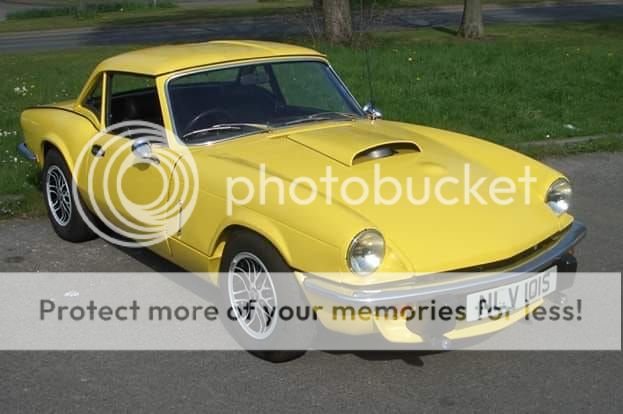
As it was our intention, to undertake most if not all of the Toledo’s maintenance ourselves, we ordered from the parts department, a copy of the official BLMC loose-leaf Triumph Toledo manual (brown, four-ring file | Triumph Part No. 545168).
When we returned to Mann Egerton, to take delivery of the car, we discovered that the owner’s operating handbook was missing and there was no documentation pertaining to the car’s service history. An appropriate “spare” Toledo operating handbook (appears to be dated October 1974!?!) was quickly found, together with a new Triumph PASSPORT TO SERVICE booklet, but as a consequence, we had nothing to indicate whether the PDI – pre-delivery inspection, 1,000 mile service and 3,000 mile service had been completed.
Toledo 1300 Handbook, British Leyland, 4th Edition, Publication Part No. 545116 [printed in England by The Nuffield Press Limited, Cowley, Oxford | 25/14 (87669) 10/74--5,000]
Hence, the car does not have an FSH (i.e. Full Service History), but over the period that it was in continuous service, from May 1975 to mid-1999, it was probably better and more regularly maintained than most other cars. I undertook the Toledo’s first recorded 6,000 mile service at an indicated mileage range of 5,988 to 6,056 miles, during the period 8th to 27th June 1976, as recorded in Triumph PASSPORT TO SERVICE booklet.
* * * * * * * * * * * * * * * * * * * * * * * * * * * * * * * * * * * * * * * * * * * * * * * * * * * * * * * * * * * * * * * * * * * * * * * * *
In the past, my father had expressed a fondness for the Triumph Herald & Vitesse, but said that the rear wheel-arches which intruded into the rear passenger cabin, had put him off buying one. During our late-October 1968, 10-day holiday in Malta, I had seen several locally-assembled RHD Triumph Heralds, bearing a Maltese Cross emblem rather than the Triumph emblem.
I have since learned that after the Triumph Herald was discontinued, RHD Triumph Toledos were later assembled in Malta, of which I recently came across one still in Malta, being advertised for sale (Tel. +356 79400876 or E-mail: youzevz@gmail.com) on the Internet; which until recently had been in the hands of a single owner for 41 years. It was also said that it would cost approximately £350 to ship it to Great Britain.
Maltese “Harvest Gold”, 1974 Triumph Toledo 1300 for sale, assembled in Malta on 30th September 1974
http://www.carandclassic.co.uk/list/41/toledo/
For our December 1969 holiday, my father had booked a fly-drive package holiday in Cyprus, which involved pre-booking a minimum number of nights’ stay, at a choice of various specified hotels, plus pre-booking a hire-car, selected from one of various price categories. For reasons of size and comfort, for my father, mother and I, we chose to have the luxurious FWD Triumph 1300. Although the car more than adequately served our needs, both the battery and the engine’s cooling system needed regular topping-up, on an almost daily basis; something we attributed to the poor maintenance of hire-cars, rather than any inherent fault in Triumph cars.
TO BE CONTINUED ...

